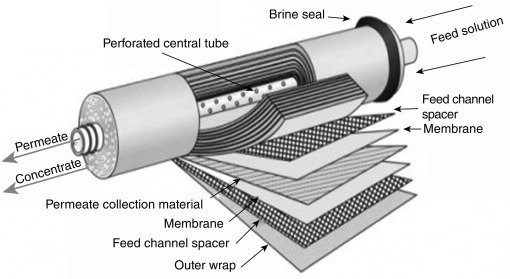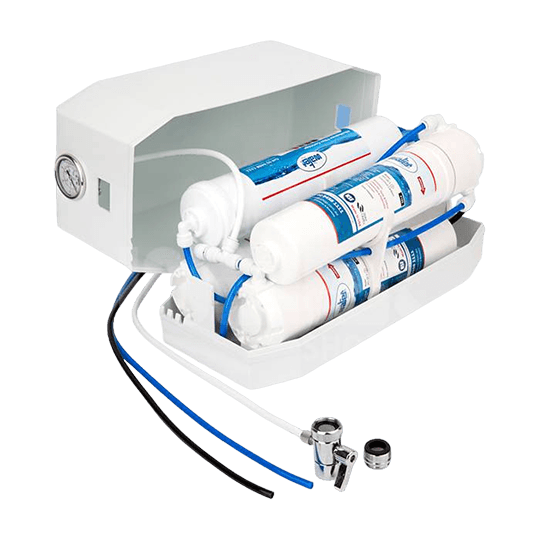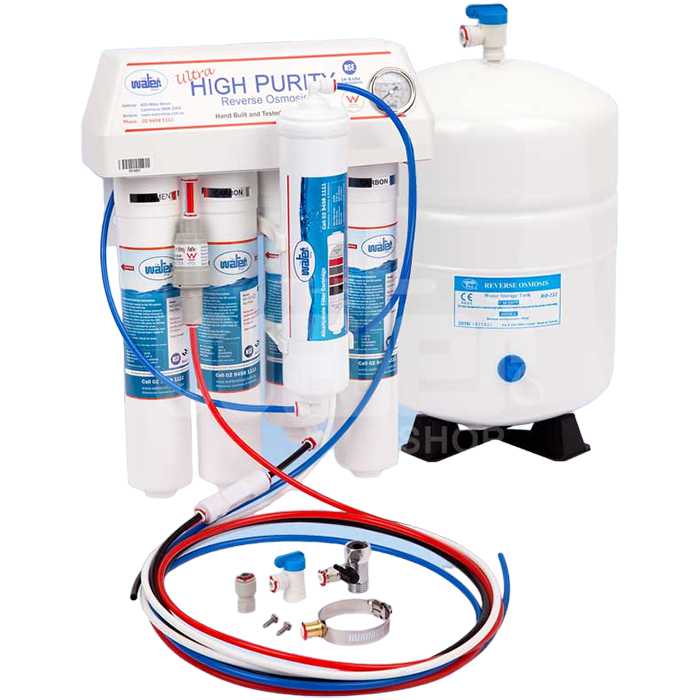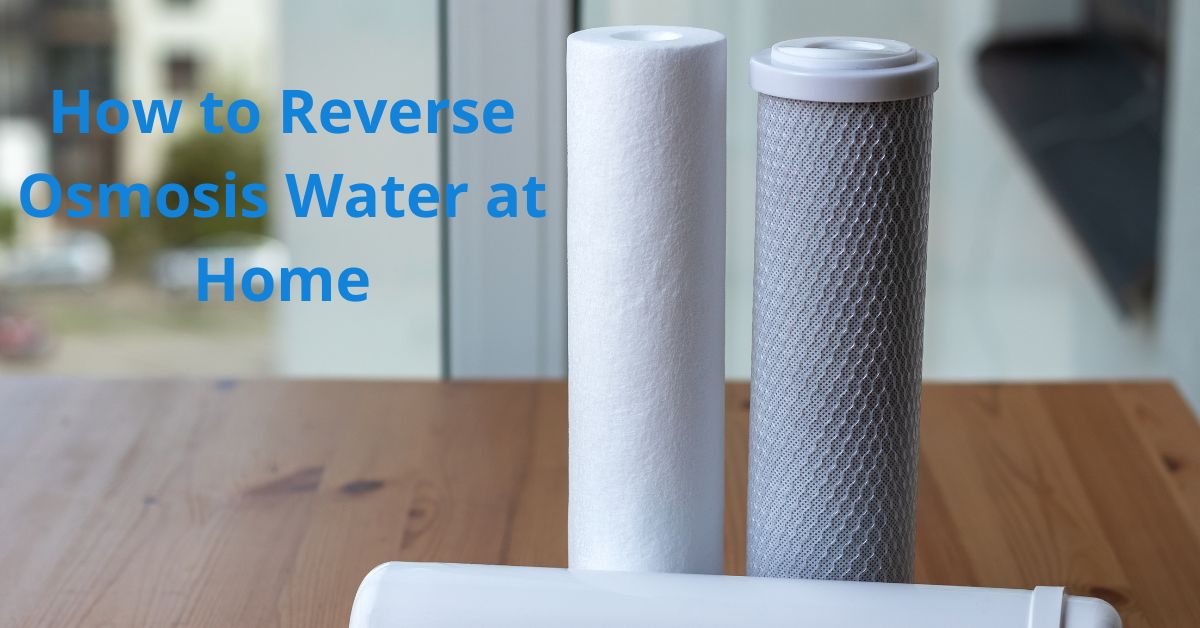In today’s world, ensuring access to clean, safe drinking water is more important than ever. Recent reports, including one from the Sydney Morning Herald, have highlighted concerns about PFAS and other contaminants. Reverse osmosis (RO) has emerged as a popular and effective method for purifying water at home. This advanced filtration process removes a wide range of contaminants, providing you with high-quality water right from your tap. Let’s dive into the world of reverse osmosis and explore how you can implement this technology in your home.
Understanding Reverse Osmosis
Reverse osmosis is a water purification process that uses a semi-permeable membrane to remove ions, unwanted molecules, and larger particles from drinking water. This technology can eliminate up to 99% of contaminants, including dissolved salts, heavy metals, bacteria, pyrogens, sugars, proteins, particles, dyes, and other impurities.

The process works by applying pressure to push water through the membrane, leaving contaminants behind. The result is clean, pure water that’s safe for drinking and cooking.
Types of Reverse Osmosis Systems for Home Use
When considering a reverse osmosis water filter for your home, you have several options:
Under Sink Reverse Osmosis: This is one of the most popular choices for homeowners. Installed under your kitchen sink, these systems directly provide filtered water through a dedicated faucet, as their name suggests.
A benchtop reverse osmosis water filter is an excellent choice for those who prefer a more portable option or have limited under-sink space. You can easily move these compact units on your counter if necessary.
Benchtop Reverse Osmosis

Under Sink Reverse Osmosis

Whole House Reverse Osmosis: While less common due to their higher cost and complexity, whole house systems provide purified water to every tap in your home.
Each type of system has its advantages, and the best choice depends on your specific needs, budget, and home setup.
Benefits of Home Reverse Osmosis
Implementing a reverse osmosis water filter in your home offers numerous benefits:
Superior Water Quality: RO systems remove a vast array of contaminants, providing you with clean, great-tasting water.
Cost-Effective: While there’s an initial investment, a home RO system can save you money in the long run compared to buying bottled water.
Environmentally Friendly: By reducing reliance on bottled water, you’re helping to decrease plastic waste.
Peace of Mind: Having fully purified water can bring comfort, particularly in areas where water quality is a concern.
Improved Taste: Many users report that RO-filtered water tastes better than tap or bottled water, especially when coupled with a remineraliser/alkaliser.
Can I Install a Reverse Osmosis System Myself?
One common question many homeowners ask is whether they can install a reverse osmosis system themselves. The answer depends on several factors:
Type of System: Benchtop reverse osmosis water filters are typically the easiest to set up, often requiring minimal installation as per below video. Under-sink reverse osmosis systems are more complex, but they can be DIY-friendly for those with some plumbing experience. See our blog post Installing a Reverse Osmosis System Under Your SInk.
Plumbing Skills: Installing an undersink system involves working with water lines and may require drilling holes for the faucet. If you’re comfortable with basic plumbing tasks, you might be able to handle the installation.
Tools and Equipment: Ensure you have the necessary tools before attempting installation. Most systems come with detailed instructions and sometimes include basic tools.
Local Regulations: Some areas may have restrictions on who can install water treatment systems. Check your local laws before proceeding.
Warranty Considerations: To maintain the warranty, some manufacturers may require professional installation. Review the warranty terms before deciding to install it yourself.
If you’re not confident in your ability to install the system or have a complex plumbing setup, it’s best to hire a professional. This guarantees proper installation and can save you time and potential headaches down the road.
Maintaining Your Reverse Osmosis System
Once you have your reverse osmosis water filter installed, proper maintenance is key to ensuring its longevity and effectiveness.
Regular Filter Changes: Most RO systems require periodic replacement of their multiple filters. Follow the manufacturer’s recommendations for replacement schedules.
Membrane Replacement: The RO membrane is the heart of the system and typically needs replacement every 3-6 years, depending on usage and water quality.
Water Quality Testing: Regularly test your filtered water to ensure the system is working effectively.
Choosing the Right System for Your Home
When selecting a reverse osmosis system, consider the following factors:
Water Usage: Estimate your daily water consumption in order to select a system with the appropriate capacity.
Available Space: Measure the area where you plan to install the system to ensure a proper fit.
Water Pressure: To function effectively, RO systems must have a minimum water pressure and would not work with gravity fed systems.
Water Quality: If you have specific contaminants you’re concerned about, ensure the system you choose is capable of removing them.
Budget: Consider both the initial cost and long-term maintenance expenses.
Brand Reputation: When choosing a reliable system, research brands and read reviews.
Implementing a reverse osmosis water filter in your home can significantly improve your water quality and provide peace of mind. Whether you opt for a benchtop reverse osmosis water filter Australia, an under sink reverse osmosis, or another configuration, you’re taking a positive step towards ensuring clean, safe water for you and your family.




